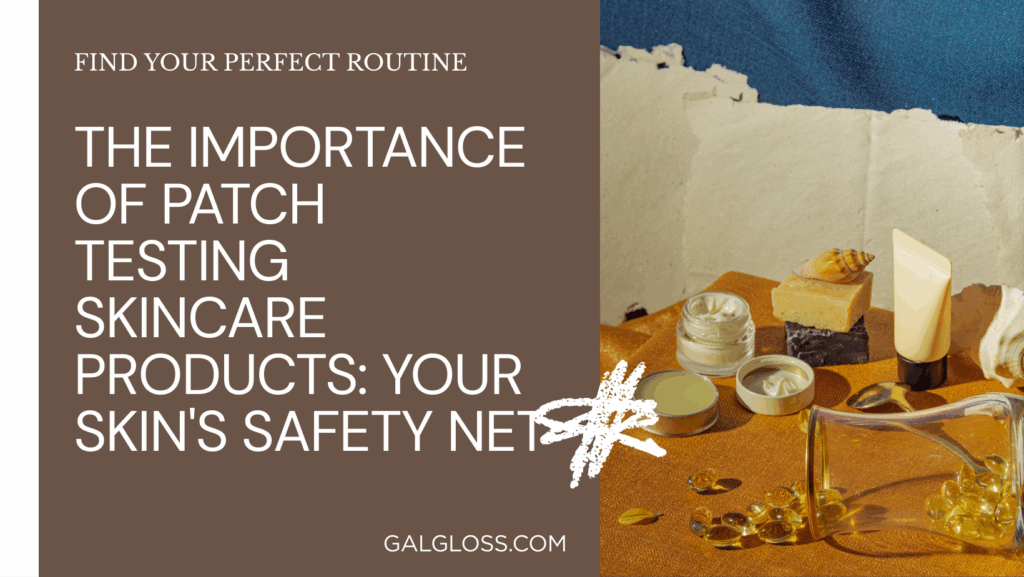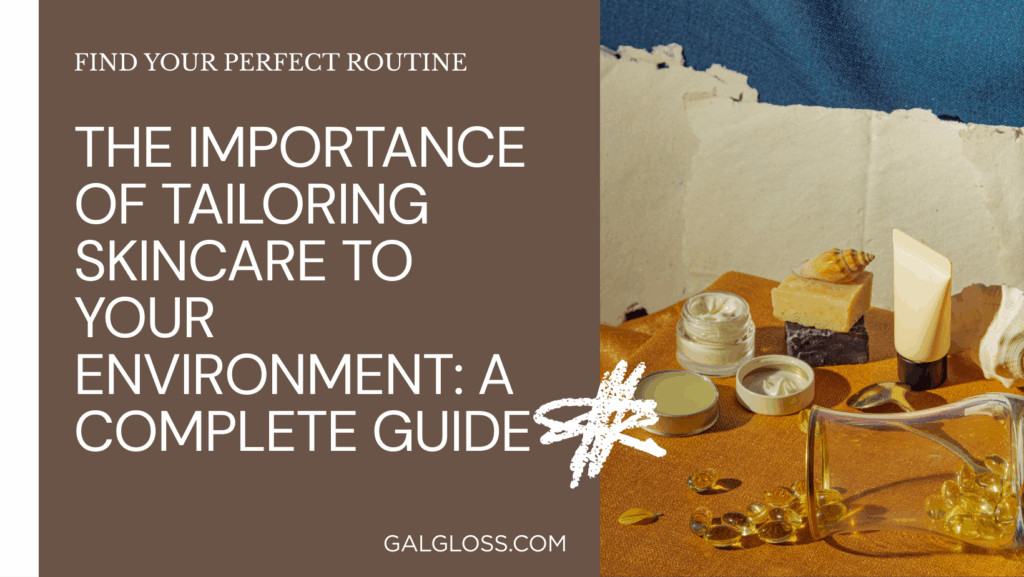Ever slathered on a new face cream, only to wake up looking like a tomato? Ouch! We’ve all been there. That’s why patch testing skincare products is your secret weapon for happy, healthy skin. But what exactly is patch testing, and why should you care?
Let’s face it: our skin is as unique as our fingerprints. What works wonders for your bestie might turn your face into a war zone. That’s where patch testing comes in – it’s like a first date for your skin and that shiny new serum. You’re not committing to the whole bottle just yet; you’re just seeing if you’re compatible.
Think of patch testing as your skin’s personal bodyguard. It’s there to protect you from nasty surprises, save you some hard-earned cash, and keep your skincare game strong. So, are you ready to become a patch testing pro? Buckle up, because we’re about to dive into everything you need to know about this crucial skincare step!
What is Patch Testing?

Patch testing is like a sneak peek for your skin. It’s a simple way to test a small amount of a product on a discreet area of your skin before you go all in. But don’t confuse it with allergy testing at the doctor’s office – that’s a whole different ball game.
Here’s the deal:
- Patch testing: DIY method to check if a product irritates your skin
- Allergy testing: Professional medical procedure to identify specific allergens
Why bother? Well, it’s all about playing it safe. Your skin is precious, and you don’t want to risk a full-face freakout, right?
Why Patch Testing Matters
Preventing Allergic Reactions
Picture this: you’ve just dropped a small fortune on a fancy new moisturizer. You slather it all over your face, dreaming of that dewy glow. But come morning, you look like you’ve been stung by a swarm of angry bees. Not cute.
Patch testing is your first line of defense against allergic reactions. It’s like having a crystal ball for your skin – you get a sneak peek at how your face might react before you commit.
Identifying Skin Sensitivities
Maybe you don’t have full-blown allergies, but your skin’s still pickier than a toddler at dinnertime. Patch testing helps you spot those sneaky sensitivities before they become a big problem.
Saving Money and Avoiding Waste
Let’s talk cash. Skincare products aren’t cheap, and there’s nothing worse than buying a pricey potion only to find out it hates your skin. Patch testing saves you from turning your bathroom cabinet into a product graveyard.
Common Ingredients That May Cause Reactions
Not all skincare ingredients play nice with everyone’s skin. Here’s a quick hit list of potential troublemakers:
- Fragrances
- Essential oils
- Alcohol
- Retinoids
- Salicylic acid
- Benzoyl peroxide
- Sulfates
- Parabens
And here’s a shocker: just because something’s “natural” doesn’t mean it’s harmless. Poison ivy is natural, but you wouldn’t want that on your face, would you?
How to Perform a Patch Test at Home
Ready to play scientist with your skincare? Here’s your step-by-step guide to patch testing like a pro:
- Clean a small area of skin (inside of your elbow or behind your ear are good spots)
- Apply a small amount of the product
- Cover with a bandage if it’s a leave-on product
- Wait 24-48 hours
- Check for any reactions (redness, itching, burning, or swelling)
Pro tip: Don’t patch test multiple products at once. You’re not a beauty guinea pig, and you want to know exactly which product is causing issues if something goes wrong.
Interpreting Patch Test Results
So, you’ve waited patiently. Now what? Here’s what to look out for:
- No reaction: Green light! Your skin seems to tolerate the product.
- Mild irritation: Proceed with caution. Try diluting the product or using it less frequently.
- Strong reaction: Red alert! This product is not your friend. Abort mission!
If you’re unsure or have a strong reaction, it’s time to phone a friend – and by friend, I mean a dermatologist. They’re the real skin whisperers.
Patch Testing vs. Spot Testing: What’s the Difference?
Confused about patch testing and spot testing? You’re not alone. Here’s the lowdown:
- Patch testing: Apply product to a small area, cover, and wait 24-48 hours
- Spot testing: Apply product to a small area of your face and use normally for a few days
Think of patch testing as the cautious older sibling and spot testing as the slightly more daring younger one. Both have their place, but patch testing is generally safer for identifying potential allergies.
The Risks of Skipping Patch Tests
Tempted to skip the patch test and dive right in? Let me tell you a little story…
Sarah was excited about her new “miracle” serum. She skipped the patch test and applied it all over her face. Two days later, she was in the ER with severe swelling and rash. Don’t be like Sarah.
Skipping patch tests is like playing Russian roulette with your skin. Is it really worth the risk?
Special Considerations for Sensitive Skin
If your skin is more sensitive than a poet’s soul, listen up. You need to be extra careful with patch testing:
- Test for longer (72 hours instead of 48)
- Be extra vigilant about ingredients
- Consider professional patch testing with a dermatologist
Remember, sensitive skin is like a moody cat – it needs extra love and attention.
Patch Testing for Different Product Types
Not all products are created equal when it comes to patch testing. Here’s a quick guide:
Cleansers
- Test on a small area of skin
- Leave on for a minute, then rinse off
- Repeat for a few days
Moisturizers and Serums
- Apply a small amount to test area
- Leave on for 24-48 hours
Sunscreens
- Apply to test area
- Check for both irritation and sun protection
Remember, consistency is key. Test each product the same way you’d use it in your routine.
When to Re-Test Products
You’re not off the hook after one successful patch test. Re-test products:
- If you haven’t used them in a while
- If the formula changes
- If your skin’s condition changes (like during pregnancy or menopause)
Think of it as a regular check-up for your skincare routine.
Professional Patch Testing: When and Why
Sometimes, DIY just doesn’t cut it. Consider professional patch testing if:
- You have severe allergies or sensitivities
- You can’t pinpoint what’s causing reactions
- You’re dealing with persistent skin issues
Dermatologists can test for specific allergens and give you a comprehensive overview of what your skin loves (and hates).
Myths About Patch Testing Debunked
Let’s bust some myths, shall we?
Myth 1: “If it’s sold in stores, it must be safe for everyone.” Truth: Everyone’s skin is different. What’s safe for most might be your skin’s worst nightmare.
Myth 2: “Natural products don’t need patch testing.” Truth: Natural doesn’t always mean gentle. Even natural ingredients can cause reactions.
Myth 3: “I’ve used similar products before, so I don’t need to test.” Truth: Formulations vary. Better safe than sorry!
Building a Safe Skincare Routine with Patch Testing
Ready to level up your skincare game? Here’s how to build a bulletproof routine:
- Start with basics: cleanser, moisturizer, sunscreen
- Patch test each product before introducing it
- Introduce new products one at a time
- Keep a skincare diary to track reactions
- Be patient – good skin takes time!
Remember, your skincare routine should be as unique as you are. What works for the Instagram influencer next door might not work for you, and that’s okay!
Conclusion: Your Skin Deserves the Extra Step
So, there you have it – the lowdown on patch testing skincare products. Is it a bit of extra work? Sure. But isn’t your skin worth it?
Think of patch testing as a loving gesture to your skin. It’s like checking the water temperature before diving into a pool – a small step that can save you from a big shock.
Remember, your skin is playing the long game. Treat it right, and it’ll thank you for years to come. So next time you’re tempted to slather on that new miracle cream without a patch test, ask yourself: “Is my face really the best place to gamble?”
Take the time, do the test, and your skin will love you for it. After all, in the world of skincare, patience isn’t just a virtue – it’s your secret weapon for that healthy, happy glow.
Now, go forth and patch test like a pro! Your future skin will thank you.





